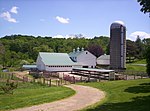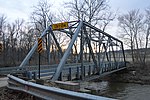Pleasant Hill Lake
Bodies of water of Ashland County, OhioBodies of water of Richland County, OhioMuskingum Watershed Conservancy DistrictReservoirs in OhioUnited States Army Corps of Engineers, Huntington District
Pleasant Hill Lake is a 783-acre man made lake located near Perrysville and between Ashland and Richland counties in Ohio. Completed in 1936, Pleasant Hill Dam was built on the Clear Fork of the Mohican River. The dam which forms the lake is a 113 ft (34 m) tall earth-fill dam. It is located in Ashland but the lake extends into Richland. The lake which was constructed by the United States Army Corps of Engineers, was built for the purpose of flood control.
Excerpt from the Wikipedia article Pleasant Hill Lake (License: CC BY-SA 3.0, Authors).Pleasant Hill Lake
Forest Hill Road, Green Township
Geographical coordinates (GPS) Address Nearby Places Show on map
Geographical coordinates (GPS)
| Latitude | Longitude |
|---|---|
| N 40.640277777778 ° | E -82.341944444444 ° |
Address
Pleasant Hill Lake Park
Forest Hill Road
44864 Green Township
Ohio, United States
Open on Google Maps








